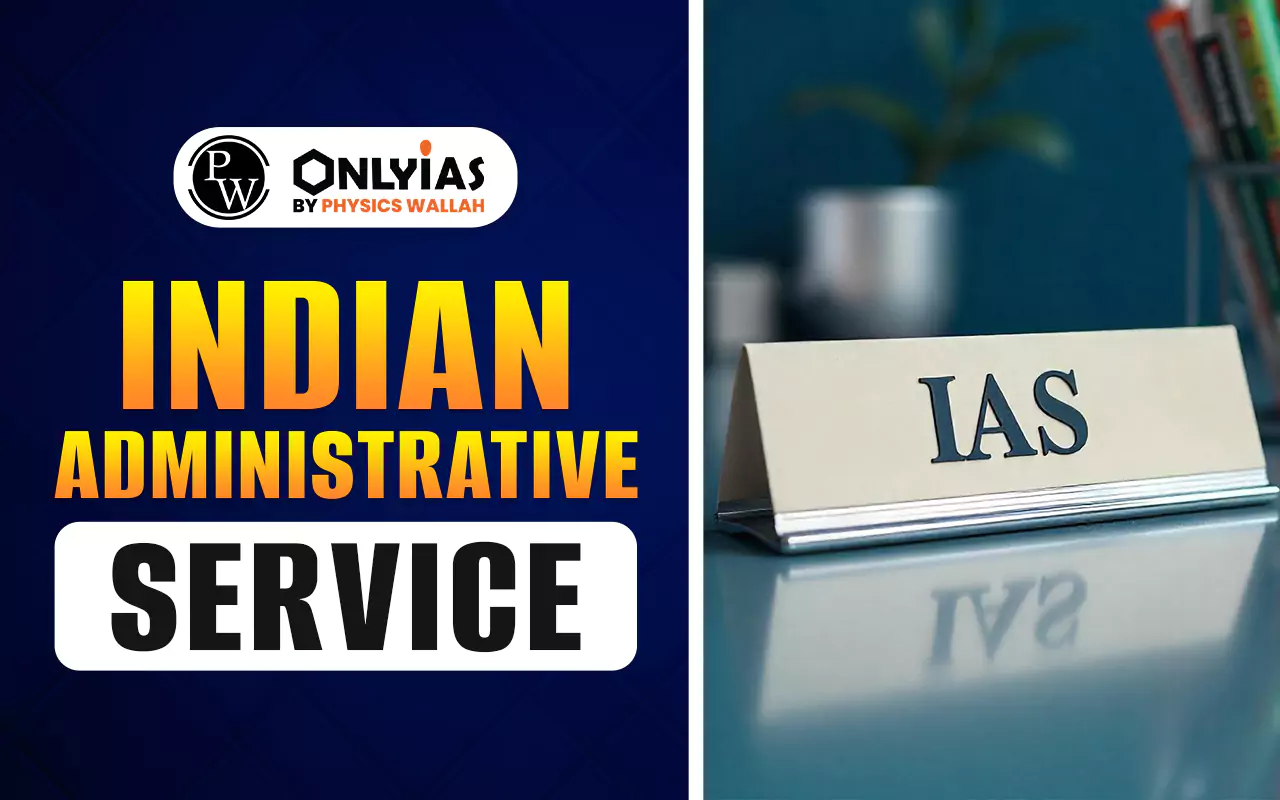
Indian Administrative Service (IAS) stands as the most prestigious and powerful civil service in India. Known for its historical legacy and administrative significance, it forms the backbone of India’s bureaucratic structure. Referred to as the “Steel Frame of India,” IAS officers are entrusted with crucial responsibilities that directly impact the development and governance of the nation.
Interested candidates must read on to get a detailed insight into what is the Full Form of IAS, its history, eligibility, examination process, ranks, salary, and the path to becoming an IAS officer.
The Indian Administrative Service is the premier civil service of the Government of India. IAS officers are responsible for implementing government policies, maintaining law and order, managing public administration, and supervising development activities across districts, states, and the central government.
Originally known as the Imperial Civil Service (ICS) during British rule, the IAS was formally established post-independence in 1947. The IAS full form is Indian Administrative Service, and it is rightly called the “steel frame” of India due to its crucial role in nation-building.
The full form of IAS is Indian Administrative Service. It is the premier civil service under the Government of India, responsible for formulating and implementing policies across administrative levels. The IAS is part of the All India Services and plays a central role in maintaining governance and public administration in the country.
IAS officer full form refers to an officer of the Indian Administrative Service. These officers are selected through the Civil Services Examination conducted by the UPSC and are appointed by the President of India. They hold crucial responsibilities ranging from district administration to policy formulation at the highest levels of government.
| Indian Administrative Service | |
| Aspect | Details |
| Full Form of IAS | Indian Administrative Service (IAS) |
| Founded | 1947 (Post-independence restructuring of ICS) |
| Conducting Authority | Union Public Service Commission (UPSC) |
| Recruitment Exam | Civil Services Examination (CSE) |
| Exam Stages | Preliminary Exam, Mains Exam, Personality Test (Interview) |
| Eligibility Criteria | Indian nationality, Graduate degree, Age 21–32 years (General category) |
| Number of Attempts | 6 (General), 9 (OBC), Unlimited (SC/ST within age limit) |
| Training Academy | Lal Bahadur Shastri National Academy of Administration (LBSNAA), Mussoorie |
| Initial Posting | Sub-Divisional Magistrate (SDM) |
| Career Progression | SDM → DM/Collector → Secretary → Chief Secretary → Cabinet Secretary |
| Pay Scale (Starting) | ₹56,100 per month (Pay Level 10) |
| Top Pay Scale | ₹2,50,000 per month (Cabinet Secretary, Pay Level 18) |
The Indian Administrative Service history dates back to 1858 with the creation of the Imperial Civil Service to serve British interests in India. After India gained independence, the service was reorganised and renamed IAS in 1947, preserving its administrative structure while aligning it with democratic governance.
| Indian Administrative Service History | ||
| Period | Event/Development | Key Highlights |
| 1858 | Formation of Indian Civil Services (ICS) | After the 1857 revolt, the British Crown took control of India and formally instituted the ICS to centralise and professionalise administration. |
| 1861 | Indian Councils Act | Allowed minimal Indian representation in ICS; however, exams held in London limited access for Indians. |
| 1886-87 | Aitchison Commission Recommendations | Advocated for greater Indian representation; led to ICS exams being held in India, although Indian candidates had limited seats. |
| Early 20th Century | Growing Indian Presence in ICS | Indian officers became more prominent in administration, increasingly demanding self-governance. |
| 1947 | India Gains Independence | Transition from colonial bureaucracy to a democratic administrative system; ICS retained temporarily. |
| 1947-1950 | Formation of IAS | Sardar Vallabhbhai Patel spearheaded efforts to establish a unified Indian Administrative Service to ensure national integration and continuity in governance. |
| 1976 | Kothari Commission | Recommended wider educational qualifications and a more comprehensive UPSC exam process to suit complex governance needs. |
| 2004 | Hota Committee | Suggested performance-linked incentives, greater transparency, and mandatory regular training for IAS officers. |
| 2005–2009 | Second Administrative Reforms Commission (ARC) | Proposed citizen-centric governance, ethical administration, and accountability through performance evaluation mechanisms. |
| Recent Years | Introduction of Lateral Entry | Aimed to incorporate domain expertise from the private sector and academia to complement generalist IAS officers and improve administrative efficiency. |
This transformation marked the beginning of a new era where civil servants became the executors of public welfare policies and instruments of equitable development.
If you are wondering how to become an IAS officer, the journey begins with qualifying for one of the most competitive exams in the country—the Civil Services Examination (CSE), conducted by the Union Public Service Commission (UPSC). The selection process includes:
Qualifying for all three stages with high merit is necessary to be appointed as an IAS officer.
To appear for the IAS examination, candidates must meet specific eligibility conditions. Below are the key IAS eligibility criteria:
| IAS Eligibility Criteria | |
| Criteria | Requirements |
| Nationality | Must be an Indian citizen |
| Age Limit | 21 to 32 years (General), with relaxation for reserved categories |
| Educational Qualification | Graduation from a recognised university |
| Number of Attempts | 6 (General), 9 (OBC), Unlimited (SC/ST until age limit) |
Age Relaxations:
UPSC Eligibility Criteria 2025
The IAS officer ranks and salary vary with seniority and responsibilities. As per the 7th Pay Commission, the pay structure follows different levels. Here is an outline of the major positions and their corresponding salary:
| IAS Officer Ranks and Salary | |||
| Pay Level | Years of Service | Post/Designation | Monthly Salary (INR) |
| Level 10 | 1–4 years | Sub-Divisional Magistrate, Assistant Secretary | 56,100 |
| Level 11 | 5–8 years | Deputy Secretary, Additional District Magistrate | 67,700 |
| Level 12 | 9–12 years | Joint Secretary, District Magistrate | 78,800 |
| Level 13 | 13–16 years | Director, District Magistrate | 1,18,500 |
| Level 14 | 16–24 years | Divisional Commissioner, Joint Secretary | 1,44,200 |
| Level 15 | 25–30 years | Principal Secretary, Additional Secretary | 1,82,200 |
| Level 16 | 30–33 years | Additional Chief Secretary | 2,05,400 |
| Level 17 | 34–36 years | Chief Secretary, Secretary in Union Government | 2,25,000 |
| Level 18 | 37+ years | Cabinet Secretary of India | 2,50,000 |
Apart from salaries, IAS officers receive several allowances, including house rent allowance (HRA), travel allowance (TA), and dearness allowance (DA), along with access to government bungalows, vehicles, and staff.
IAS officers handle multifaceted responsibilities that evolve with rank and postings. Their duties include:
Whether at the district level or central ministry, the role of an IAS officer significantly influences the nation’s governance and policy execution.
Becoming an IAS officer is not easy. With over 5 lakh candidates appearing each year, the success rate is less than 0.1%. The average candidate clears the exam after 2–3 attempts, with some studying for 8–10 hours daily over several years.
Preparing for the Civil Services demands discipline, analytical thinking, and diverse subject knowledge. A structured long-term plan is essential.
UPSC Previous Year Question Papers (PYQs)
The Indian Administrative Service is not just a career, but a service to the nation. It requires dedication, perseverance, and integrity. For those who succeed, the IAS offers unparalleled authority, respect, and the ability to drive real change at all levels of governance.
From understanding what is Indian Administrative Service to learning how to become an IAS officer, knowing the IAS full form, IAS officer ranks and salary, and fulfilling the IAS eligibility criteria—every step is important in this transformative journey.
Ready to boost your UPSC 2025 preparation? Join PW’s UPSC online courses today!
<div class="new-fform">
</div>
